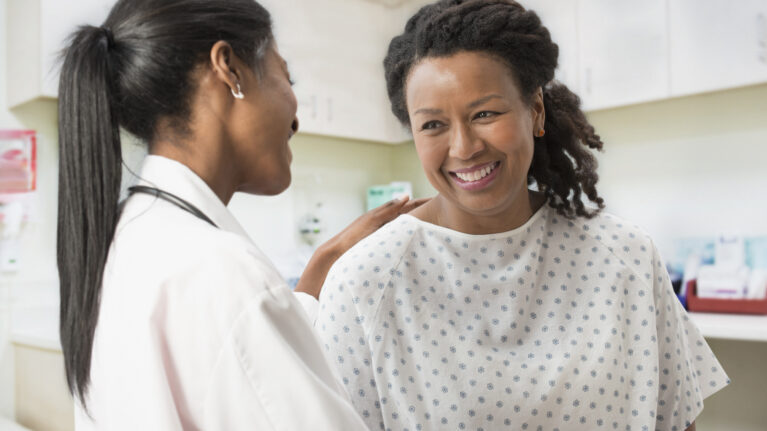Breast Cancer Screening Tests

What Should I Know about Routine Screening?
Early detection through annual mammograms, like Hologic’s Genius® 3D Mammography™ exam, is the best tool available in the fight against breast cancer. When cancers are detected in their earliest stages, they are typically easier and less costly to treat and associated with better outcomes.
What is a Mammogram?
During a routine mammogram, your breasts will be compressed for a short period–about 15 minutes–while the machine takes several images at different angles and positions. You may feel slight discomfort during the exam, but that’s normal.
When Should I Start Getting a Mammogram?
You should discuss when to start breast cancer screening with your doctor and determine a plan based on your individual risk factors. To start, it’s recommended that women have a risk assessment at age 30 to determine their breast cancer screening plan. For women of average risk, the American College of Radiology (ACR), American College of Obstetricians and Gynecologists (ACOG) and Society of Breast Imaging (SBI) all recommend annual breast cancer screening with digital breast tomosynthesis, commonly referred to as 3D™ Mammography, beginning at age 40.
Below are screening recommendations from the American College of Radiology and Society of Breast Imaging per age group.32
- Age 20-29
Most women will not need to start getting their first mammogram until age 40. You can complete monthly self exams and discuss any possible risk factors with your doctor, like family history. Being familiar with your breast health and risk factors allows you to be an advocate for your health. - Age 30-39
Undergo a risk assessment by age 30–knowing your risks can help you determine when you should begin receiving annual 3D™ mammograms. - Aged 40-49
If you are at an average risk for breast cancer, you should begin receiving annual 3D™ mammograms at age 40. One in six breast cancers occur in women in this age group, so it’s important to get your first mammogram during this time.32 - Aged 50-74
Continue receiving an annual 3D™ mammogram. Your risk for breast cancer increases with age and annual mammograms can help catch any breast cancers early.37 Discuss any concerns or new risk factors with your doctor. - Aged 75 or older with average risk
If you’re in good health, continue receiving an annual 3D™ mammogram. Talking to your doctor can help you determine the best screening plan based on your needs.
Not all Mammograms are the Same
Know Your Risk
A family history of breast cancer, having dense breasts or being a carrier of the BRCA gene mutations can put you at a high risk for breast cancer. Risk factors may require you to begin breast cancer screening earlier than age 40. Minority women, especially Black women, are also at higher risk for developing breast cancer. Black women are 72% more likely to be diagnosed with breast cancer before age 50 than their white counterparts, often due to a lack of access to mammography.32 Women at high risk for breast cancer may also require additional annual exams such as ultrasound or contrast enhanced mammogram. Knowing your risk factors empowers you to make the best choices for a breast cancer screening plan.
Self-Exams
Early detection also includes regular self-breast exams. You can perform a self-breast exam once a month to become familiar with how your breasts look and feel. They are not a replacement for mammography screening, however, as the Genius exam can detect invasive cancers in their earliest stages before they become palpable or felt through a self-breast exam.
A monthly self-exam is valuable in understanding what’s normal for your breasts so you can recognize any changes or abnormalities–and take action if needed. If you do notice a change, contact your health care professional immediately.


